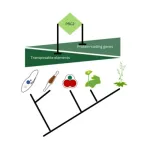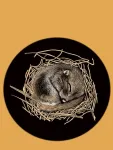(Press-News.org) A study has revealed new details about a key population of immune system cells critical to successful vaccination against the pandemic virus, SARS-CoV-2.
Led by researchers at NYU Grossman School of Medicine and New York Genome Center, the current study focused on T cells, which along with B cells, compose the human immune system’s response to invading viruses and bacteria. A subset of T cells, labeled with the surface protein CD8, produce molecules that directly kill infected cells. B cells produce antibody proteins that neutralize and label infected cells for removal from the body.
Without risking infectious disease itself, vaccines expose patients to a piece of an invading microbe to generate responses that include B and T cell activation, such that the system is ready for the invader should it be encountered again. The mRNA vaccines deployed against COVID-19 were based on RNA, a genetic material used to encode the spike protein that the virus needs to attach to human cells. Once injected, mRNA instructions are read, the spike is built, and the immune response is triggered.
In the rush to develop vaccines against SARS-CoV-2, and with the rapid testing of thousands of patients required, clinical trials relied mostly on antibody levels, where efficient tests were available, to judge whether patients’ immune responses to mRNA vaccine candidates were protective. The resulting clinical protection, however, was evident as early as ten days after the first vaccine shot, well before neutralizing antibodies could possibly be generated. T cells were suspected to be at least as important to this protection, but standard methods for tracking them were too slow, and so careful analyses of CD8+ T cell responses were sidelined.
Published online September 21 in Nature Immunology, the new study describes a fast (high-throughput) method to track T cell responses, confirms them to be vital to early protection provided by mRNA vaccines against COVID-19, and reveals the T cell subsets most responsible for it.
“Our study identified markers for the CD8+ T cells that arise from mRNA vaccination and that track closely with successful vaccination, which had previously been difficult to quantify on the population level,” says co-first study author Rabi Upadhyay, MD, assistant professor in the Department of Medicine at NYU Langone Health, and faculty in its Perlmutter Cancer Center. “Although our study looks at mRNA vaccination against coronavirus, the antigen-specific CD8+ T cell subpopulations we uncover represent key features of immune responses more broadly, and may help us to study T cells in other disease settings.”
For the current study, the research team analyzed gene expression over time in single T cells collected before and after immunization with the mRNA vaccine produced by BioNtech and Pfizer against SARS-CoV-2. The researchers found distinct subsets of CD8+ T cells that reliably multiplied (proliferated) 21 days after the original vaccination, specifically targeting and attacking key proteins (antigens) that make up the pandemic virus.
In looking at the genetic make-up of the most effective T cells, the researchers observed that cells lacking a surface protein called KLRG1, which stands for co-inhibitory receptor killer-cell lectin like receptor G1, were the most likely to multiply quickly after mRNA vaccination and specifically attack. When study authors checked for these profiles in hospitalized COVID-19 patients, those with the most “properly programmed” T cells – lacking KLRG1 but expressing other markers such as CD38 and HLA-DR – were the most likely to successfully recover from their infections.
Quicker Answers on Cancer
In the years since the pandemic began, mRNA vaccines, first used against the virus, are now in clinical trials wherein they direct the body’s immune system to attack cancerous cells. By clarifying T cell markers (e.g. KLRG1, CD38, HLA-DR), and the timeline for when CD8+ T cells arise in the blood after vaccination, the new work may enable clinical teams to tell which patients are responding to the vaccines within days or weeks, say the authors.
That compares to the more than two months that oncologists must currently wait after mRNA vaccination to perform CT scans and assess whether their lung, breast, or prostate cancer patients responded to an mRNA vaccine. If they are validated in this setting and dramatically shorten such wait times, the new profiling methods promise to help patients pivot more quickly to other treatments if necessary, the researchers say.
Furthermore, the study authors refer to a recent study led by a different research team which found that T cells with very similar attributes – again involving KLRG1, CD38, and HLA-DR – were the most effective at attacking cancer cells after treatment with an immune system-triggering drug (immunotherapy), just as they were the most effective at attacking the SARS-CoV-2 virus in the current study.
“It is remarkable that T cell attributes found after treatment with an effective immunotherapy mirrored those that we found to track with patient recovery from COVID-19,” says co-corresponding author Dan Littman, MD, PhD, the Helen L. and Martin S. Kimmel Professor of Molecular Immunology in the Department of Cell Biology at NYU Langone. “This pattern suggests that the close monitoring of antigen-specific CD8+ T cell subpopulations will be central to future efforts to design treatments and vaccines against either viruses or tumors.”
Along with Upadhyay and Littman, study authors from NYU Langone were Marie Samanovic, Ramin Herati, Jordan Axelrad, and Mark Mulligan. Study authors from the New York Genome Center were co-first author Bingjie Zhang, Yuhan Hao, John Blair, and co-corresponding author Rahul Satija. Littman is also a member of Perlmutter Cancer Center and a Howard Hughes Medical Institute (HHMI) investigator. This work was supported by HHMI, the Chan Zuckerberg Initiative (EOSS5-0000000381, HCA-A-1704- 01895), and National Institutes of Health grants AI082630, AI158617, RM1HG011014-02 and 1OT2OD033760-01.
END
Study details immune cells vital to success of vaccines against coronavirus
Discovery may help to measure efficacy of future cancer vaccines
2023-09-21
ELSE PRESS RELEASES FROM THIS DATE:
University of Cincinnati research examines the molecular mechanism of psychological loss
2023-09-21
Psychological loss can occur when someone loses a job, loses a sense of control or safety or when a spouse dies. Such loss, which erodes well-being and negatively impacts quality of life, may be a common experience but little is known about the molecular process in the brain that occurs because of loss.
New research from the University of Cincinnati explores those mechanisms through a process known as enrichment removal (ER). The study highlights an area of the brain that plays a key role in psychological loss and identifies new molecular targets that may alleviate its impact.
The research was published in the journal Molecular Psychiatry.
The research was led by Marissa Smail, a ...
Cardiff University chooses Figshare as integral part of research data management strategy
2023-09-21
Digital Science, a technology company serving stakeholders across the research ecosystem, is pleased to announce that Cardiff University has chosen Figshare from Digital Science’s flagship products to enhance its researcher support services, as it continues its work as a leading research institution.
Cardiff University – already excelling in the production of high-quality, innovative research that translates into benefits for the city, Wales and worldwide – has signed a two-year deal to utilize Figshare as its data repository and to form an integral ...
MD Anderson Research Highlights for September 21, 2023
2023-09-21
HOUSTON ― The University of Texas MD Anderson Cancer Center’s Research Highlights showcases the latest breakthroughs in cancer care, research and prevention. These advances are made possible through seamless collaboration between MD Anderson’s world-leading clinicians and scientists, bringing discoveries from the lab to the clinic and back.
Understanding the role of exceptional research as a driving force behind progress in its mission to end cancer, MD Anderson is proud to support World Cancer Research Day, Sept. 24, which calls for global efforts to promote cancer ...
Incidence of diabetes among youth before and during the pandemic
2023-09-21
About The Study: In this study that included data from Kaiser Permanente Southern California of individuals age 19 and younger, the incidence of type 1 diabetes slightly increased overall and type 2 diabetes significantly increased after the beginning of the COVID-19 pandemic, in particular among non-Hispanic Black and Hispanic youth. These findings suggest the need for further evaluation of physiologic and behavioral risk factors preceding new-onset diabetes during the pandemic.
Authors: Matthew T. Mefford, Ph.D., of Kaiser Permanente Southern ...
Disparities in emergency medicine residents’ performance assessments by race, ethnicity, and sex
2023-09-21
About The Study: This analysis of assessments of 2,708 emergency medicine residents found evidence of sex-specific ethnoracial disparities in ratings on the Milestones assessments. These disparities increased over time across multiple Milestones assessments and were most severe for female residents of ethnoracial groups that are underrepresented in medicine.
Authors: Elle Lett, Ph.D., M.A., M.Biostat., of the University of Washington School of Public Health in Seattle, is the corresponding author.
To ...
New origin story for key regulatory gene
2023-09-21
Polycomb repressive complex 2 (PRC2) was discovered decades ago in Drosophila, where it was found to be a key controller of developmental genes. Further analyses showed that PRC2 modifies chromatin and silences target gene expression. However, the ancestral function of PRC2 - as functioning primarily to control genes during development - was called into question when researchers discovered that PRC2 also plays a role in unicellular species, in which no development takes place. A first hint at PRC2’s original role came from studies in red algae, which found PRC2 left its methylation mark on transposons – jumping genes that ...
Ultrathin films achieve record hydrogen-nitrogen separation
2023-09-21
Metal-organic frameworks (MOFs) are a class of materials that contain nano-sized pores. These pores give MOFs record-breaking internal surface areas, which make them extremely versatile for a number of applications: separating petrochemicals and gases, mimicking DNA, producing hydrogen, and removing heavy metals, fluoride anions, and even gold from water are just a few examples.
In the gas-separation domain, MOFs are particularly interesting for separating hydrogen from nitrogen, which is crucial for clean energy production, fuel cell efficiency, ammonia synthesis, and various ...
Getting ready for bed controlled by specific brain wiring in mice
2023-09-21
The team, led by Imperial College London researchers, uncovered the wiring in mouse brains that leads them to begin nesting in preparation for sleep. Published today in Nature Neuroscience, the study reveals that preparing properly for sleep is likely a hard-wired survival feature – one often neglected or overridden by humans.
We all need to sleep, but since we are unconscious when we do so, it makes sense to fall asleep in a safe and warm place. For some animals this is especially important, as a burrow or nest provides a haven from ...
Mutation-specific peptide vaccine against midline gliomas used in patients for the first time
2023-09-21
Tumor vaccines can help the body fight cancer. These vaccines alert the patient's immune system to proteins that are carrying cancer-typical alterations. Physicians and cancer researchers from Heidelberg and Mannheim have now treated adult patients with advanced midline gliomas, difficult-to-treat brain tumors, with a peptide vaccine for the first time. The vaccine mimicked a mutational change in a histone protein typical of this type of cancer. The vaccine proved to be safe and induced the desired immune responses directed ...
This parasitic plant convinces hosts to grow into its own flesh—it’s also an extreme example of genome shrinkage
2023-09-21
If you happen to come across plants of the Balanophoraceae family in a corner of a forest, you might easily mistake them for fungi growing around tree roots. Their mushroom-like structures are actually inflorescences, composed of minute flowers.
But unlike some other parasitic plants that extend an haustorium into host tissue to steal nutrients, Balanophora induces the vascular system of their host plant to grow into a tuber, forming a unique underground organ with mixed host-parasite tissue. This ...
LAST 30 PRESS RELEASES:
Injectable breast ‘implant’ offers alternative to traditional surgeries
Neuroscientists devise formulas to measure multilingualism
New prostate cancer trial seeks to reduce toxicity without sacrificing efficacy
Geometry shapes life
A CRISPR screen reveals many previously unrecognized genes required for brain development and a new neurodevelopmental disorder
Hot flush treatment has anti-breast cancer activity, study finds
Securing AI systems against growing cybersecurity threats
Longest observation of an active solar region
Why nail-biting, procrastination and other self-sabotaging behaviors are rooted in survival instincts
Regional variations in mechanical properties of porcine leptomeninges
Artificial empathy in therapy and healthcare: advancements in interpersonal interaction technologies
Why some brains switch gears more efficiently than others
UVA’s Jundong Li wins ICDM’S 2025 Tao Li Award for data mining, machine learning
UVA’s low-power, high-performance computer power player Mircea Stan earns National Academy of Inventors fellowship
Not playing by the rules: USU researcher explores filamentous algae dynamics in rivers
Do our body clocks influence our risk of dementia?
Anthropologists offer new evidence of bipedalism in long-debated fossil discovery
Safer receipt paper from wood
Dosage-sensitive genes suggest no whole-genome duplications in ancestral angiosperm
First ancient human herpesvirus genomes document their deep history with humans
Why Some Bacteria Survive Antibiotics and How to Stop Them - New study reveals that bacteria can survive antibiotic treatment through two fundamentally different “shutdown modes”
UCLA study links scar healing to dangerous placenta condition
CHANGE-seq-BE finds off-target changes in the genome from base editors
The Journal of Nuclear Medicine Ahead-of-Print Tip Sheet: January 2, 2026
Delayed or absent first dose of measles, mumps, and rubella vaccination
Trends in US preterm birth rates by household income and race and ethnicity
Study identifies potential biomarker linked to progression and brain inflammation in multiple sclerosis
Many mothers in Norway do not show up for postnatal check-ups
Researchers want to find out why quick clay is so unstable
Superradiant spins show teamwork at the quantum scale
[Press-News.org] Study details immune cells vital to success of vaccines against coronavirusDiscovery may help to measure efficacy of future cancer vaccines




